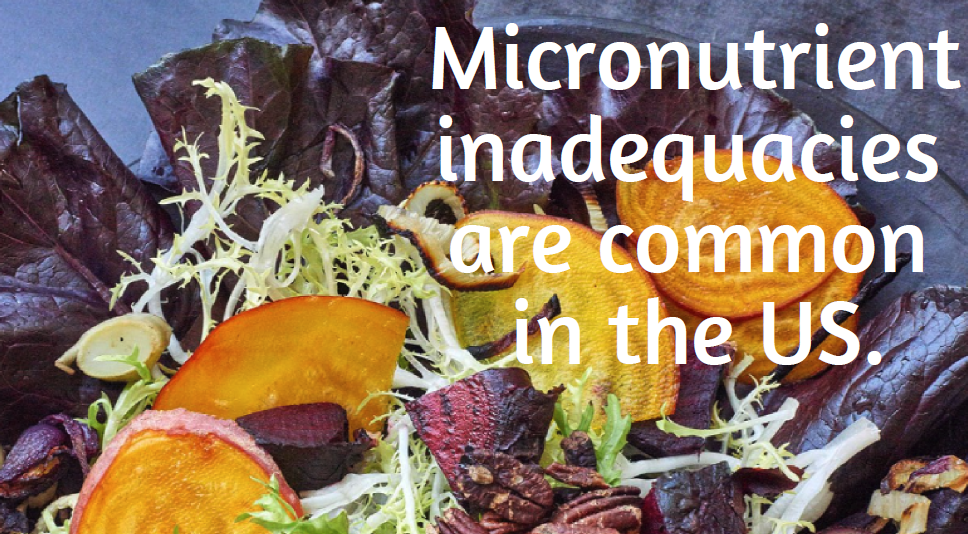Did you know that micronutrient inadequacies are actually common in the United States?
Because I sure didn’t.
Micronutrient deficiencies are not necessarily prevalent here, but inadequacies — which occur when someone is getting enough of the nutrient to be outside of the “deficient” category but not enough to meet the estimated average requirement for their needs — are surprisingly common.
According to Oregon State University, “micronutrient inadequacies could elicit symptoms of general fatigue, reduced ability to fight infections, or impaired cognitive function (i.e., attention [concentration and focus], memory, and mood). Micronutrient inadequacies may also have important implications for long-term health and increase one’s risk for chronic diseases like cancer, cardiovascular disease, type 2 diabetes mellitus, osteoporosis, and age-related eye disease.”
It can be difficult to pinpoint signs of a micronutrient inadequacy, since symptoms can vary widely depending on the nutrient and intake levels. However, “The long-term solution for solving micronutrient inadequacies is using food-based approaches to ensure a diverse, sustainable and nutritious diet, which may be complemented with food fortification and, for specific life-stages and population groups, micronutrient supplementation to ensure supply of micronutrients that might be insufficient in the usual diets” (source).
The Dietary Guidelines for Americans and MyPlate have rolled out a series of strategies to help people build varied eating patterns, and our library of resources is growing every day.
To supplement these materials, we’re going to take a closer look at micronutrients. What they are, what they do, and how to get more of them into an eating pattern. That brings us to our next series: Micronutrients and You.
First we’ll explore micronutrients. What they are, how they differ from macronutrients, and their general impact on health. Then, we’ll take a detailed look at the CDC’s six essential micronutrients: vitamin A, vitamin D, folate, iodine, iron, and zinc. All of these explorations will come with handouts and fun facts.
Stick around. The world of micronutrients is about to get a whole lot bigger.
Copyright foodandhealth.com, reprinted with permission.

